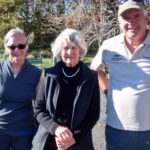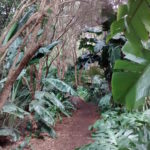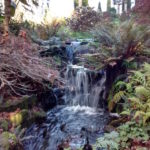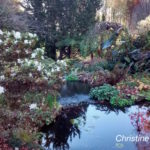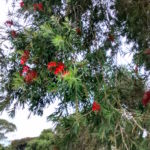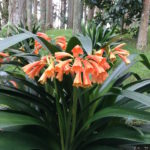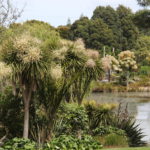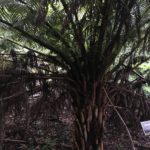Kia Ora! (good health in Maori)
A recent job offer in Auckland New Zealand prompted my husband and I to pack up four suitcases with an assortment of clothing and take the opportunity to live in a country known for its natural beauty. Auckland is in the midst of a booming economy with an influx of 40,000 new immigrants every year. We luckily found short term accommodation within walking distance of the Auckland Botanic Gardens. I was in heaven!
Auckland Botanic is a 64-hectare oasis in South Auckland, approximately 20 km from downtown Auckland. As you approach the gardens you can hear the steady roar of highway traffic on a very busy motorway, which runs from south to north of Auckland city. Very soon though the noise of the traffic lessens as you are transported to the serenity of the large and beautiful gardens, peaceful streams, and friendly Kiwi’s and visitors all who say hello, good morning or gidday!
In the perennial beds, I found many familiar plants, many still blooming, although it is winter on this side of the world! Other gardens contained camellias, hibiscus and roses, which still had lots of colour. The magnolias were in bud. There is an edible garden, with rain harvesting and worm composting. The food from this garden supplies the lovely café on the premises where you can enjoy great food and excellent coffee. I was fortunate to meet with two of the managers on site who treated me to one of these great coffees and private tour of the gardens. Auckland Botanic’s garden focus is to educate the public by offering free or low-cost workshops, bus trips and access to a wonderful library. Frequent crowds of young school children come to learn about the garden, worm composting and pollination. The garden’s library and large visitor centres have friendly staff. They provide the public with information on what to grow in this temperate climate with humid conditions and clay soil. All of this with no entrance fee!
All together I spent a week walking about the Auckland Botanic. Every day brought a new surprise in the gardens or in nature. Colourful Iceland poppies (Papaver nudicaule) with giant red mustard (Brassica juncea), a beautiful contrast in a border, greeted me each day with more poppies in bloom. I spotted an eel and a native duck in the pond and colourful parrots (originally from Australia) and butterflies flew in and around the gardens.
Gorgeous, huge tree ferns such as black tree fern (Cyathea medultaris), wheki-ponga (Dicksonia fibrosa) and a smaller wheki (Dicksonia squarrosa) are all available to view in the gardens. Along with the South African kaffir lily (Clivia minata), Bromeliads and the Tree Aloe add to the tropical feel of New Zealand. There are examples of many native trees including pohutukawa (Metrosideros excels) with beautiful red flowers, ribbonwood (Plagianthus regius), and the cabbage tree (Cordyline australis), a favourite among many Kiwi gardeners.
Another high point of the trip was an invitation to take part in a “work day” at one Auckland’s premier private gardens, Ayrlies Garden in Whitford, which I happily accepted. What a treat to see these expansive gardens and wetlands. I spent the day hauling mulch and digging out errant Harake flax (Phormium Tenax). I was fortunate enough to meet the owner Beverley and her daughter Stephanie, genuine friendly Kiwi’s. I came equipped with my “gum boots” and new garden gloves. Customs is very strict about gardening tools and contaminants on boots, so we made sure our boots (garden and hiking) were spotlessly clean when we had first arrived. These islands are very susceptible to foreign invaders and the latest is the airborne Myrtle rust. Many of New Zealand’s native plants are from the Myrtle family.
Although it has been a short time since we first came to New Zealand we haven’t been disappointed with its beauty. Be forewarned though, come prepared for physical exertion as Auckland and New Zealand can be very hilly in some areas (Auckland is built around 48 extinct volcanic cones) and driving can be a little crazy on the winding and twisting roads (especially on the left!) But the views of the sea and large rolling hillsides with of course the requisite sheep (also cows and horses) are worth it!
— Christine Hamilton, Guelph-Wellington Master Gardener
- GWMG Christine Hamilton (left) with Beverley McConnell, owner of Ayrlies Garden, and Jack Hobbs, Garden Manager of Auckland Botanic.
- Iceland poppies (Papaver nudicaule) with giant red mustard (Brassica juncea).
- Entrance to Auckland Botanic Garden.
- The pohutukawa tree (Metrosideros excels), native to New Zealand.
- Clivia (photo courtesy of Auckland Botanic Gardens).
- Cordyline australis (photo courtesy Auckland Botanic Gardens).
- Cordyline australis (photo courtesy Auckland Botanic Gardens).

